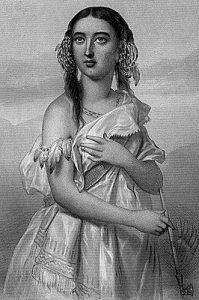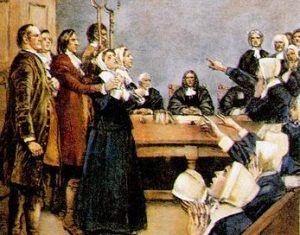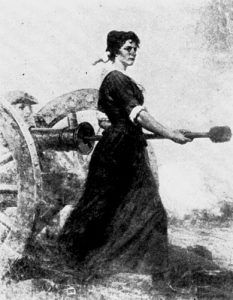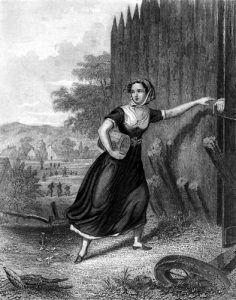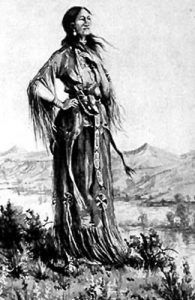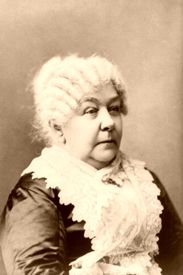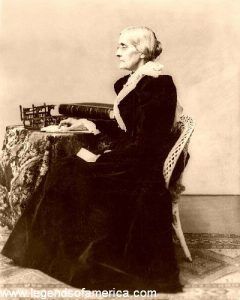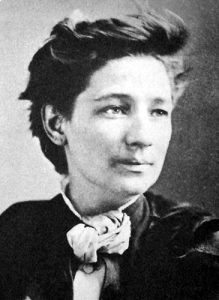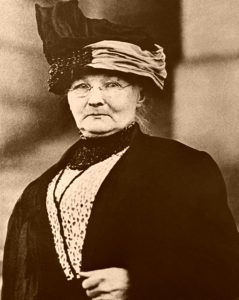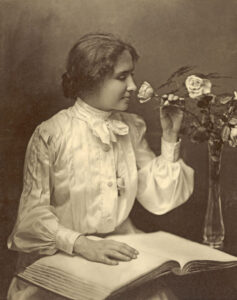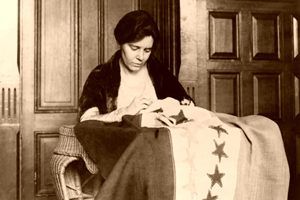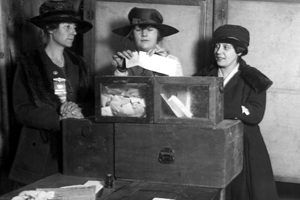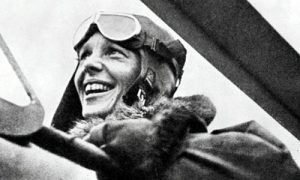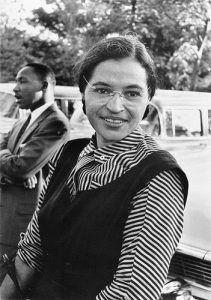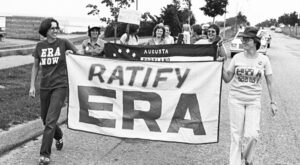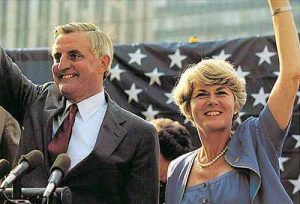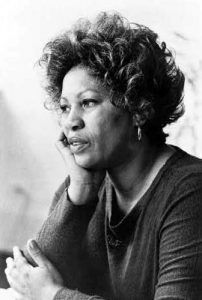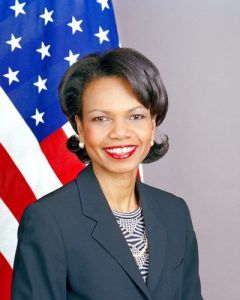Hundreds of women stand out in American History, and many events in our nation’s growth led to the ultimate equality. Here’s a timeline of some significant events.
Early years in America
1587 – Virginia Dare is the first person born in America to English parents in Roanoke Island, North Carolina.
1607 – Pocahontas saves Jamestown, Virginia, colonist Captain John Smith from execution by Algonquian Chief Powhatan.
1620 – On November 21, when the Mayflower arrived, 13-year-old Mary Chilton was the first European to set foot at Plymouth, Massachusetts.
1638 – Anne Hutchinson, who challenged the teachings of the leaders of the Massachusetts Bay Colony, was tried for heresy and banished. She and her family moved to Rhode Island.
1648 – Margaret Brent, one of the largest landowners in Maryland, asks the Maryland Assembly for two votes, one for herself and another as Leonard Calvert’s administrator and Lord Baltimore’s attorney. Her request is denied.
1650 – Anne Bradstreet’s first volume of poems, The Tenth Muse Lately Sprung Up in America, is published in London.
1660 – Mary Barrett Dyer is executed in Boston for her Quaker proselytizing.
1682 – Mary Rowlandson publishes A Narrative of the Captivity and Restoration of Mrs. Mary Rowlandson, describing her capture by Narragansett warriors and three months of captivity.
1692 – In an outbreak of hysteria in and around Salem, Massachusetts, hundreds of people, primarily women, are accused of witchcraft. Nineteen are put to death. Most of the accused and the accusers are women.
1701 – The first sexually integrated jury hears cases in Albany, New York.
1707 – Henrietta Johnston began to work as a portrait artist in Charleston, South Carolina, making her the first known professional woman artist in America.
1766 – Mary Katherine Goddard and her widowed mother become publishers of the Providence Gazette newspaper and the annual West’s Almanack, making her the first woman publisher in America.
1767 – Anne Catherine Hoof Green takes over her late husband’s printing and newspaper business, becoming the first American woman to run a print shop. The following year, she was named the official printer for the colony of Maryland.
1769 – American colonies based their laws on the English common law, summarized in the Blackstone Commentaries. It said, “By marriage, the husband and wife are one person in the law. The very being and legal existence of the woman is suspended during the marriage, or at least is incorporated into that of her husband under whose wing and protection she performs everything.”
1770 – Phillis Wheatley, the first African American woman poet of note in the United States, publishes her first poem, An Elegiac Poem, on the Death of the Celebrated Divine…George Whitefield.
1773 – As an adjunct to the Sons of Liberty, women form the Daughters of Liberty.
1774 – North Carolina women signed the Edenton Proclamation calling for the boycott of British goods.
1775 – Mary Katherine Goddard became the first woman postmaster in the country (in Baltimore). In 1777, she became the first printer to offer copies of the Declaration of Independence, including the signers’ names.
1776 – Ann Lee founded the parent Shaker settlement in America in the woods of Niskayuna, New York.
1777 – All states passed laws removing women’s right to vote.
1778 – On June 28, Mary McCauly (“Molly Pitcher”), wife of an American gunner, brought water to the troops at the Battle of Monmouth Court House. Legend claims that she took her husband’s place after he collapsed.
1782 – Deborah Sampson Gannett, disguised as a man, enlists in the 4th Massachusetts Regiment as Robert Shurtleff. She is one of many women who fought in the American Revolution.
1789 – The United States Constitution was ratified. The terms “persons,” “people,” and “electors” are used, allowing the interpretation of those beings to include men and women.
Mary Katherine Goddard opened a bookstore in Baltimore, Maryland, and was probably the first woman in America to do so.
1790 – Judith Sargent Murray published her essay “On the Equality of the Sexes.
The Second Great Awakening began; significantly more women than men participated in this wave of religious revival.
Mother Bernardina Matthews established a Carmelite convent near Port Tobacco, Maryland, the first community of Roman Catholic nuns in the Thirteen Colonies. (The Ursuline convent was established in New Orleans, Louisiana, in 1727 and was still in French territory.)
1792 – Suzanne Vaillande appears in The Bird Catcher in New York, the first ballet presented in the U.S. She was probably the first woman to work as a choreographer and set designer in the United States.
1793 – Hannah Slater receives the first U.S. patent granted to a woman for a type of cotton thread. Her invention helped her husband build a successful textile business.
1795 – Anne Parrish founded the House of Industry, which employs poor women. It is the first American charitable organization operated by women for women.
1800’s
1800 – The United States has the world’s highest birth rate, with 7.04 children per woman.
1804 – Native American Sacagawea, whose husband is a Lewis and Clark Expedition member, serves as a guide and interpreter for the group.
1805 – Mercy Otis Warren publishes her influential History of the Rise, Progress, and Termination of the American Revolution, drawing in part on personal knowledge of the prominent figures of the time.
1807 – New Jersey revokes the right of women to vote, a right they had been granted since the adoption of the Constitution of New Jersey in 1776.
1809 – Elizabeth Ann Seton established the first American community of the Sisters of Charity in Emmitsburg, Maryland. In 1975, she became the first native-born American to be made a saint by the Roman Catholic Church.
1821 – Emma Willard founded the Troy Female Seminary in New York.
1825 – Frances Wright founded a utopian community at Nashoba, Tennessee, trying to put into practice her ideas for the gradual emancipation of slaves. The plantation fails but attracts wide publicity.
1833 – Lydia Maria Child publishes An Appeal in Favor of That Class of Americans Called Africans, arguing for the abolition of slavery.
Oberlin Collegiate Institute (later Oberlin College) was founded in Ohio as the first American college to admit men and women equally.
1834 – The American Female Reform Society was founded.
In Lowell, Massachusetts, women mill workers staged a successful strike to reverse a 25% cut in their pay.
1836 – The Factory Girls Association stages a strike at the mills in Lowell, Massachusetts.
1837 – Mary Lyon founded Mount Holyoke College for women in South Hadley, Massachusetts.
1837 – The first Anti-Slavery Convention of American Women was held in New York City.
1839 – Mississippi is the first state to grant women the right to hold property in their own name, with their husbands’ permission.
1840 – Elizabeth Cady Stanton attends the World Anti-Slavery Convention in London and is turned away by male organizers.
1843 – The reports of Dorothea Dix to the Massachusetts Legislature about prison conditions for the insane led to reform.
1845 – Sarah Bagley established the Female Labor Reform Association in Lowell, Massachusetts.
1848 – Elizabeth Cady Stanton organized the Seneca Falls Convention in New York and launched the woman suffrage movement in the United States. The Declaration of Sentiments was patterned after the Declaration of Independence.
1849 – Harriet Tubman escaped from slavery in Maryland to Philadelphia, Pennsylvania. By the outbreak of the Civil War in 1861, Tubman had returned to the South some 19 times and rescued upward of 300 other slaves.
Elizabeth Blackwell became the first modern-day woman doctor of medicine in the United States.
1850 – The Female Medical College of Pennsylvania was founded.
1851 – African American evangelist and reformer Sojourner Truth gave her famous speech defending the rights of black women, “Ain’t I a Woman?”
1853 – Antoinette Brown Blackwell became a Congregational minister and was the first woman ordained by a recognized denomination in the United States.
1854 – Elizabeth Cady Stanton and Susan B. Anthony presented a petition with 10,000 signatures demanding suffrage and married women’s property rights to the New York legislature.
1855 – In Missouri v. Celia, a Slave, a Black woman is declared property without a right to defend herself against a master’s act of rape.
1860 – Elizabeth Palmer Peabody founded the first English-language kindergarten in the United States.
1861 – Two weeks after the onset of the Civil War, women found 20,000 aid societies throughout the country. In the north, they are coordinated by the Sanitation Commission. Women raised $15 million worth of supplies by the war’s end. Mary Bickerdyke joined the Union Army as a volunteer nurse during the outbreak of the Civil War. She later became the Chief of Nursing.
1863 – The Women’s National Loyal League was founded to encourage a constitutional amendment abolishing slavery and granting women’s suffrage.
Mary Edwards Walker became a Union Army surgeon in the Civil War. In 1865, she received a Congressional Medal of Honor. It was revoked shortly before her death and then re-awarded posthumously.
1864 – Rebecca Lee Crumpler became the first African-American woman to receive an M.D. degree. She graduated from the New England Female Medical College.
1865 – Sarah Edmonds publishes her autobiography, Nurse and Spy in the Union Army, describing her undercover work disguised as a man named Frank Thompson.
1866 – Congress passes the 14th Amendment (ratified by the states in 1868), saying, “Representatives shall be apportioned among the several States according to their respective members, counting the whole number of persons in each State, excluding Indians… But when the right to vote… is denied to any of the male inhabitants of such State… the basis of representation therein shall be reduced in proportion.” It is the first time “citizens” and “voters” are defined as “male” in the Constitution.
Lucy Hobbs became the first woman to graduate from dental school, the Ohio College of Dental Surgery.
1867 – The Young Women’s Christian Association was founded in Boston to assist single women migrating to the cities for work.
1869 – Lucy Stone and Henry Blackwell found the American Woman Suffrage Association supporting the 15th Amendment.
Elizabeth Cady Stanton and Susan B. Anthony opposed ratification of the 15th Amendment because it omits any mention of voting rights for women. Thus, the alliance between feminists and abolitionists disintegrated.
Iowan Arabella Mansfield is the first woman admitted to the bar in the United States.
The first woman suffrage law in the U.S. was passed in the territory of Wyoming.
1870 – The 15th Amendment receives final ratification. It states, “The right of citizens of the United States to vote shall not be denied or abridged by the United States or any State on account of race, color, or previous condition of servitude.” Thus, women are not specifically excluded from the vote.
The first sexually integrated grand jury hears cases in Cheyenne, Wyoming. The chief justice stops a motion to prohibit the integration of the jury, stating: “It seems to be eminently proper for women to sit upon Grand Juries, which will give them the best possible opportunities to aid in suppressing the dens of infamy which curse the country.”
1871 – Smith College was founded.
1872 – Charlotte E. Ray, the first African American female lawyer, became the first woman admitted to the bar in the District of Columbia.
Susan B. Anthony led 15 women to vote in Rochester, New York. She is arrested two weeks later.
Victoria Claflin Woodhull became the first woman presidential candidate in the United States when the National Radical Reformers nominated her.
1873 – Congress passes what come to be known as the Comstock Laws, federal statutes that make it illegal to transport obscene material through the mail. This prohibition is used to restrict the availability of contraceptives.
In Bradwell v. Illinois, the U.S. Supreme Court ruled that a state can exclude a married woman from practicing law.
Ellen Swallow Richards, the first woman admitted to the Massachusetts Institute of Technology, earned her B.S. degree. She became the first female professional chemist in the U.S.
1874 – Frances Willard founded the Women’s Christian Temperance Union (WCTU).
1875 – In Minor v. Happersett, the U.S. Supreme Court declared that a state could prohibit women from voting despite the privileges and immunities clause. The court declared women as “persons” but held that they constitute a “special category of nonvoting citizens.”
1877 – Eudora Clark Atkinson is the first woman superintendent of the first women’s state reformatory in the United States.
Mary Harris “Mother” Jones helped lead the Pittsburgh, Pennsylvania, railroad strike.
1879 – Mary Baker Eddy heads the newly created First Church of Christ, Scientist.
Through special Congressional legislation, Belva Lockwood became the first woman admitted to trying a case before the Supreme Court.
1880 – Paiute Indian leader Sarah Winnemucca protests conditions on Indian reservations.
1881 – Mary Lucinda Bonney and Amelia Stone Quinton Founded the Indian Treaty-Keeping and Protective Association (later the Women’s National Indian Association) in the United States.
Clara Barton established the American branch of the Red Cross and became its first president.
Helen Hunt Jackson published A Century of Dishonor, a profound condemnation of the treatment of Native Americans by the United States.
1885 – Sarah E. Goode became the first African-American woman to receive a patent for a bed that folded up into a cabinet. Goode, who owned a furniture store in Chicago, Illinois, intended the bed to be used in apartments.
1887 – Susanna Medora Salter becomes the first woman elected mayor of an American town in Argonia, Kansas.
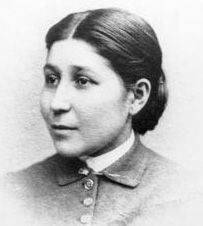
Susan LaFlesche Picotte
1889 – Jane Addams and Ellen Gates Starr found Hull House in Chicago. It is one of the first settlement houses in the United States and the most famous.
Wyoming, a U.S. territory, approved a constitution that is the first in the world to grant full voting rights to women.
Susan La Flesche Picotte became the first Native American Physician.
1890 – The General Federation of Women’s Clubs was founded.
The Daughters of the American Revolution (D.A.R.) was founded.
Florence Kelley founded the National Consumers’ League to harness women’s purchasing power to demand better labor conditions.
The rift in the suffrage movement is repaired, and two older organizations are merged to form the National American Woman Suffrage Association (NAWSA).
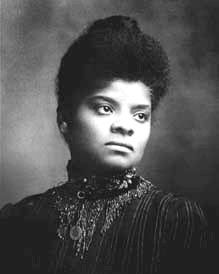
Ida B. Wells Barnett
1892 – Journalist Ida Wells Barnett begins her campaign against lynching. Her newspaper offices are burned, and she is driven out of Memphis, Tennessee.
In Massachusetts, Senda Berenson introduced basketball at Smith College for women.
1893 – In New York, Lillian D. Wald and Mary M. Brewster found the Henry Street Settlement on Manhattan’s Lower East Side. It will become the home of the first visiting nurse organization.
The Johns Hopkins University School of Medicine opens in Baltimore, Maryland. The women’s committee that funds the school insists that men and women be admitted equally.
1896 – The National Association of Colored Women was formed.
The U.S. Geological Survey hired its first woman, geologist Florence Bascom.
Alice Guy Blaché, the first American woman film director, shoots the first of her more than 300 films, a short feature called La Fee aux Choux (The Cabbage Fairy).
1897 – Alice McLellan Birney and Phoebe Apperson Hearst founded the National Congress of Mothers, later known as the Parent-Teacher Association (P.T.A.).
H.H.A. Beach’s Gaelic Symphony” is the first symphony by a woman performed in the United States and possibly the world.
Sally Jean Priesand was ordained as the first woman rabbi in the United States.
Juanita Kreps became the first woman to direct the New York Stock Exchange and later became the first woman to be appointed Secretary of Commerce.
1898 – Charlotte Perkins Gilman writes Women and Economics. She argues that the lost talent of women hampers the entire economy.
1899 – Kansan Carry A. Nation begins her campaign to close saloons, physically attacking bars with her hatchet.
1900’s
1900 – Every state has passed legislation modeled after New York’s Married Women’s Property Act (1848), granting married women some control over their property and earnings.
1902 – Ida M. Tarbell begins publishing The History of the Standard Oil Company in McClure’s Magazine. Her exposé contributed to the company’s breakup by a U.S. Supreme Court order in 1911.
1903 – Mary Morton Kimball Kehew, Mary Kenney O’Sullivan, Jane Addams, and other middle-class reformers founded the Women’s Trade Union League (WTUL) and integrated their concerns into the larger feminist movement.
Helen Keller, who was deaf and blind, graduated cum laude from Radcliffe College.
1907 – Margaret Slocum Sage donates $10 million to endow the Russell Sage Foundation to sponsor research to improve social conditions in the United States.
1908 – Hannah Kent Schoff organizes the International Conference on Child Welfare in Washington, D.C.
In Muller v. State of Oregon, the U.S. Supreme Court sustained a state law limiting the workday for Oregon’s women workers to 10 hours.
1909 – Mary White Ovington and Ida Wells Barnett helped found the National Association for the Advancement of Colored People (NAACP).
In New York, shirtwaist workers go on strike. The International Ladies’ Garment Workers’ Union (ILGWU) and the Women’s Trade Union League (WTUL) work together to support the strike.
1910 – Washington state granted women the right to vote.
1911 – California grants women the right to vote.
1912 – Kansas, Oregon, and Arizona grant women the right to vote.
Juliette Gordon Low founded the Girl Guides (later Girl Scouts) in the United States. By 1927, there would be a troop in every state.
1913 – In Washington, D.C., Alice Paul and the National American Woman Suffrage Association organized a huge march on the Capitol the day before President Woodrow Wilson’s inauguration.
1914 – Aggressive activists split from NAWSA and formed the Congressional Union, which became the National Women’s Party in 1916.
American activist Margaret Sanger is indicted under the Comstock Act for distributing a birth control pamphlet titled Family Limitation.
1915 – Suffrage referenda fail in New York, Pennsylvania, Massachusetts, and New Jersey.
1916 – Suffragettes demonstrate at the Republican and Democratic national conventions.
Carrie Chapman Catt and Jane Addams combined several American pacifist organizations to create the Women’s Peace Party.
Jeannette Rankin was elected to Congress from Montana, the first female member of the U.S. House of Representatives.
Margaret Sanger tests the validity of New York’s anti-contraception law by establishing a clinic in Brooklyn. The most well-known of birth control advocates, she is one of hundreds arrested over a 40-year period for working to establish women’s right to control their own bodies.
1917 – The N.W.P. begins picketing the White House.
Anna Howard Shaw, a former NAWSA president, heads the Women’s Committee of the Council of National Defense, a body coordinating women’s patriotic activity to support the war effort.
The U.S. Navy hires 12,000 women as clerks in the same job classifications and for the same pay as men so that it can send men overseas.
1918 – The House of Representatives passed a suffrage amendment, but it was defeated in the Senate.
The U.S. government reports that 1.4 million women work in war industries. After World War I, these women were forced out of industrial work.
In New York v. Sanger, Margaret Sanger won her suit in New York to allow doctors to advise their married patients about birth control for health purposes.
1919 – The Treaty of Versailles requires that women receive equal pay. The clause is universally ignored.
1920 – The Nineteenth Amendment to the U.S. Constitution was signed into law, giving women the right to vote.
NAWSA becomes the League of Women Voters.
Despite death threats from the Ku Klux Klan, Mary McLeod Bethune begins a voter registration drive for African American women.
1921 – The first Miss America Beauty Pageant is held in Atlantic City.
The Sheppard-Towner Act, which funds maternity assistance, is approved by Congress.
Grace Abbott becomes head of the United States Children’s Bureau. She works for better health care for children and mothers and for enacting laws against child labor.
Margaret Sanger founded the American Birth Control League, which later became the Planned Parenthood Federation of America.
1922 – Rebecca Ann Latimer Felton becomes the first woman to serve in the U.S. Senate. She serves only two days.
1924 – In Radice v. New York, the court upheld a law that forbade waitresses from working the night shift but made an exception for entertainers and ladies’ room attendants.
1932 – Frances Perkins becomes the first female in the Cabinet when appointed Secretary of Labor.
Amelia Earhart became the first woman to fly solo across the Atlantic.
The National Recovery Act forbids more than one family member from holding a government job, resulting in many women losing jobs.
1935 – Anthropologist Margaret Mead publishes Sex and Temperament in Three Primitive Societies, challenging Western assumptions about gender relations.
1937 – During a sit-down strike at a General Motors plant, the Women’s Emergency Brigade organized a continuous supply delivery that made the strike possible.
The American Medical Association recognizes birth control as a legitimate topic for medical school classes.
The U.S. Supreme Court upholds Washington state’s minimum wage laws for women.
1938 – The Fair Labor Standards Act establishes minimum wage without regard to sex.
1939 – Marian Anderson gave a concert to an audience of 75,000 at the Lincoln Memorial after the Daughters of the American Revolution prevented her from singing at Constitution Hall because of her race.
1940s – During the 1940s, the median age at first marriage dropped from 21.5 to 20.3 for women and from 24.3 to 22.7 for men.
1940 – Margaret Chase Smith is elected to fill her late husband’s seat in the U.S. Congress; she becomes the first woman to serve in the House of Representatives and the Senate.
The U.S. Republican Party came out in support of the Equal Rights Amendment.
1941 – During World War II, women’s participation in the workforce increased by nearly 60%.
1942 – The military created women’s branches in each armed service. Close to 350,000 women serve in the WAVES (Navy), WACS (Army), SPARS (Coast Guard), MCWR (Marines), and WASP (Air Force).
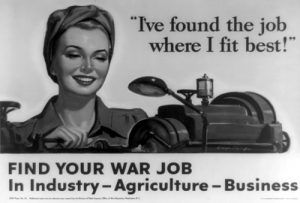 1943 – The All-American Girls Chicago Cubs owner Philip Wrigley founded the Professional Baseball League.
1943 – The All-American Girls Chicago Cubs owner Philip Wrigley founded the Professional Baseball League.
More than 310,000 women take jobs in the U.S. aircraft industry. Wartime propaganda urges women to join the labor force during World War II.
Physicist Elda Emma Anderson was recruited to work at Los Alamos on the development of the atomic bomb.
1945 – Women are forced to retreat from the labor pool. In the auto industry, the proportion of women on the assembly lines falls from 25% to 7.5%.
Eleanor Roosevelt became a delegate to the newly created United Nations.
Over six million American women who entered the workforce during World War II were pushed out of their traditionally male jobs at the war’s end.
1946 – Dr. Benjamin Spock publishes Baby and Child Care.
1947 – Marynia Farnham and Ferdinand Lundberg publish The Modern Woman: The Lost Sex, arguing that only returning to the traditional home can restore “women’s inner balance.”
The U.S. Congress passed the Army-Navy Nurse Act, creating permanent commissions for military nurses. Florence Blanchfield was the first officer commissioned.
In Fay v. New York, the U.S. Supreme Court says women are equally qualified to men to serve on juries but are granted an exemption and may serve or not as women choose.
Gerty Cori, an American citizen since 1928, became the first woman to win the Nobel Prize in Physiology or Medicine.
1950 – Harvard Law School admits women.
The U.S. Census Bureau recognizes a woman’s right to use her maiden name after marriage.
1952 – As part of its reorganization, the Democratic Party abolished its women’s division.
1955 – Rosa Parks refuses to give up her seat on a bus to a white man. Her arrest for this act sparked the Montgomery bus boycott.
1957 – Daisy Bates, president of the Little Rock, Arkansas NAACP, wins a suit to integrate Little Rock High School.
1960 – The Food and Drug Administration approves the birth control pill.
1961 – American women organized by Women Strike for Peace staged a one-day strike asking the government to “End the Arms Race, Not the Human Race.”
In Hoyt v. Florida, the U.S. Supreme Court upheld rules adopted by the state of Florida that made it far less likely for women than men to be called for jury service because a “woman is still regarded as the center of home and family life.”
1962 – Ellen Ash Peters becomes the first woman to be granted tenure at Yale Law School.
1963 – Congress passed the Equal Pay Act to eliminate the practice of paying women less for the same work performed by men.
1964 – The National Woman’s Party encourages the Amendment of Title VII to prohibit employment discrimination based on sex. The Amendment is successful.
1965 – In the case of Griswold v. Connecticut, the Supreme Court identified a constitutional right to privacy that protects a married couple’s right to use contraceptive devices.
Weeks v. Southern Bell marks a major triumph in the fight against restrictive labor laws and company regulations on the hours and conditions of women’s work, opening many previously male-only jobs to women.
1966 – Betty Friedan and other delegates to the Third National Conference of the Commission on the Status of Women established the National Organization for Women (NOW).
1967 – Muriel Siebert becomes the first woman to own a New York Stock Exchange seat.
1968 – Executive Order 11246 prohibits sex discrimination by government contractors and requires affirmative action plans for hiring women.
Shirley Chisholm became the first black woman elected to the U.S. Congress
1969 – In Bowe v. Colgate-Palmolive Company, the Seventh Circuit Court of Appeals ruled that women meeting the physical requirements could work in many jobs that had been for men only.
California adopted the nation’s first “no-fault” divorce law, allowing divorce by mutual consent.
1970 – Marie Cox founded the North American Indian Women’s Association, the first national Native American women’s group.
1971 – Betty Friedan and Representative Shirley Chisholm founded the National Women’s Political Caucus.
The Comstock Laws, which prohibited contraception material from being sent through the mail, were repealed.
In Phillips v. Martin Marietta Corporation, the U.S. Supreme Court outlaws the practice of private employers refusing to hire women with preschool children.
In Reed v. Reed, the U.S. Supreme Court holds unconstitutional a state law in Idaho establishing an automatic preference for males as administrators of wills.
1972 – Shirley Chisholm runs for the Democratic party’s presidential nomination.
Congress approves the Equal Rights Amendment (E.R.A.) and Title IX of the Higher Education Act, which prohibits sex discrimination in all aspects of education programs that receive federal support.
The National Conference of Puerto Rican Women was founded.
In Eisenstadt v. Baird, the Supreme Court ruled that the right to privacy encompasses an unmarried person’s right to use contraceptives.
1973 – The Supreme Court established a woman’s right to legal abortion in Roe v. Wade.
Tennis champion Billie Jean King defeats Bobby Riggs in the “Battle of the Sexes.”
In Pittsburgh Press v. Pittsburgh Commission on Human Relations, the U.S. Supreme Court bans sex-segregated “help wanted” advertising as violating Title VII of the Civil Rights Act.
1974 – The Coalition of Labor Union Women is formed.
The U.S. Merchant Marine Academy became the first U.S. service academy to enroll women.
The U.S. Supreme Court rules that women cannot be excluded from juries because of their sex.
Congress outlaws housing discrimination based on sex and credit discrimination against women.
1975 – In Taylor v. Louisiana, the court denies states the right to exclude women from juries.
Elizabeth Ann Seton is canonized, making her the first American-born saint.
1976 – In General Elec. Co v. Gilbert, the Supreme Court upheld women’s right to unemployment benefits during the last three months of pregnancy.
In Craig v. Boren, the U.S. Supreme Court declared unconstitutional a state law permitting 18 to 20-year-old females to drink beer while denying the rights to men of the same age. The Court established new standards for reviewing laws that treat men and women differently.
Sarah Caldwell became the first woman to conduct at New York’s Metropolitan Opera House.
1977 – Barbara McClintock becomes the first woman to win an unshared Nobel Prize in Physiology or Medicine.
1978 – The Pregnancy Discrimination Act bans employment discrimination against pregnant women.
1980 – New U.S. Equal Employment Opportunity Commission guidelines prohibit sexual harassment.
1981 – Sandra Day O’Connor is sworn in as the first female Supreme Court justice.
The U.S. Supreme Court ruled that excluding women from the draft is constitutional.
In Kirchberg v. Feenstra, the court overturns state laws, designating a husband “head and master” with unilateral control of property owned jointly with his wife.
1982 – The Equal Rights Amendment fails to be ratified.
1983 – Dr. Sally K. Ride becomes the first American woman to be sent into space.
1984 – Geraldine Ferraro is nominated as the major party’s first female vice-presidential candidate.
In Roberts v. U.S. Jaycees, sex discrimination in membership policies of organizations, such as the Jaycees, is forbidden by the Supreme Court, opening many previously all-male organizations to women.
Mississippi belatedly ratified the 19th Amendment, granting women the right to vote.
In Hishon v. King and Spaulding, the U.S. Supreme Court ruled that law firms may not discriminate based on sex in promoting lawyers to partnership positions.
1985 – Wilma Mankiller becomes the first woman chief of the Cherokee Nation of Oklahoma.
1986 – In Meritor Savings Bank v. Vinson, the U.S. Supreme Court held that a hostile or abusive work environment can prove discrimination based on sex.
1989 – In Webster v. Reproductive Health Services, the Supreme Court limits abortion rights but stops short of overturning its decision in Roe v. Wade.
Ileana Ros-Lehtinen, of Florida, became the first Hispanic woman elected to Congress. She serves in the U.S. House of Representatives.
In Boston, the Reverend Barbara C. Harris became the first woman consecrated as a bishop in the Episcopal Church.
1990 – Dr. Antonia Novello is sworn in as U.S. Surgeon General, becoming the first woman (and first Hispanic) to hold that job.
1991 – On January 2, Sharon Pratt Dixon was sworn in as mayor of Washington, DC, becoming the first black woman to serve as mayor of a major city.
1992 – Carol Moseley-Braun, of Illinois, becomes the first African-American woman elected to the U.S. Senate.
Mae Jemison became the first black female astronaut.
1993 – The Family and Medical Leave Act goes into effect.
Sheila Widnall became the first secretary of a branch of the U.S. military when she was appointed to head the Air Force.
Janet Reno became the first woman U.S. attorney general.
Carol Moseley Braun became the first black female U.S. Senator.
Toni Morrison became the first African-American woman to win the Nobel Prize for literature.
1994 – Congress adopts the Gender Equity in Education Act to train teachers in gender equity, promote math and science learning by girls, counsel pregnant teens, and prevent sexual harassment.
The Violence Against Women Act funds services for victims of rape and domestic violence, allows women to seek civil rights remedies for gender-related crimes, provides training to increase police and court officials’ sensitivity and a national 24-hour hotline for battered women.
1996 – Madeleine Albright is appointed the first female Secretary of State.
The United States v. Virginia affirms that the male-only admissions policy of the state-supported Virginia Military Institute violates the Fourteenth Amendment.
1997 – In United States v. Morrison, the U.S. Supreme Court invalidates those portions of the Violence Against Women Act permitting victims of rape, domestic violence, etc., to sue their attackers in federal court.
Madeleine Albright is sworn in as U.S. secretary of state. She is the first woman in this position and the highest-ranking woman in the United States government.
1998 – During Operation Desert Fox in Iraq, Lieutenant Kendra Williams, U.S.N., becomes the first U.S. female combat pilot to bomb an enemy target.
1999 – Lieutenant Colonel Eileen Collins is the first woman astronaut to command a space shuttle mission.
Nancy Ruth Mace is the first female cadet to graduate from the Citadel, the formerly all-male military school in South Carolina.
2000’s
2000 – Hillary Clinton is elected to the U.S. Senate, becoming the first “First Lady” ever elected to national office.
2005 – Condoleezza Rice became the first African-American female Secretary of State.
2006 – Effa Manley, co-owner of the Negro Leagues team Newark Eagles, becomes the first woman elected to the Baseball Hall of Fame.
2007 – Nancy Pelosi, a California Democrat, becomes the first woman Speaker of the House of Representatives.
Harvard University named Drew Gilpin Faust its first woman president in the school’s 371-year history.
Dr. Peggy Whitson, an American astronaut, became the first woman to command the International Space Station.
2008 – Hillary Clinton wins the New Hampshire Democratic presidential primary, becoming the first woman in U.S. history to win a presidential primary contest.
2009 – Elinor Ostrom becomes the first woman to win the Nobel Prize in Economics.
2016 – Hillary Clinton wins the Democratic Nomination for President of the U.S., becoming the first woman to win a major party’s nomination.
Compiled by Kathy Alexander, updated March 2024.
Also See:

